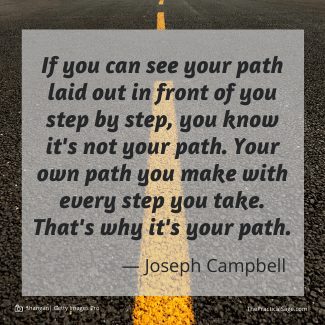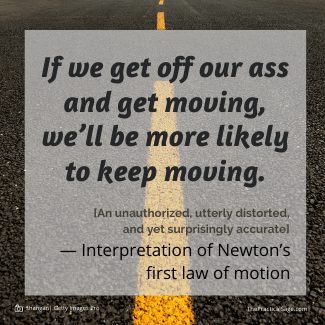The dreaded annual performance reviews: Employees fear them, or at best are indifferent. Managers view them as check-the box HR processes to (begrudgingly) complete. Ultimately, it’s not even clear how useful the information really is. Why do we continue to torture ourselves?
Intention vs. Reality
Why do leaders require annual performance reviews? Humans are a superstitious lot. We often protect the traditions of our predecessors without questioning current relevance. The intention of annual reviews is to evaluate the performance of all employees against common metrics. Comparison of those metrics ostensibly determines raises, promotions, etc. It all sounds very logical, but this “fair-and-square” approach has a number of fatal flaws. Here are just a few–
- Complex work is not easily quantifiable.
- Not all managers give effective performance feedback.
- Comparisons are not always meaningful.
Complex Work is Not Easily Quantifiable. Frederick Taylor was an efficiency whiz kid of the Industrial Revolution. Revered in some circles, reviled in others, an “-ism” was named after him, “Taylorism.” Taylorism evaluated performance by the efficiency of all the minute measurable aspects required to build a widget. If you couldn’t measure it, it didn’t matter. Taylorism strove to eliminate anything hindering efficiency, like thinking. Thinking was very bad for business; it distracted employees from the efficiency of predictable repetitive piecework. The value of employees was determined purely by the number of widgets/hour they produced. (Talk about a great place to work!)
Taylor died in 1915, but echoes of his “ism” linger. We measure what is most quantifiable, not necessarily what is most important regarding performance. Work today is far more complex. Rather than just efficiently following a process, the need to think, adjust, pivot, and innovate is critical. Efficiency is important, but efficiency and creativity are a balance. How do we capture that balance in a check-the-box performance review?
Not All Managers Give Effective Performance Feedback. Feedback is key to help people improve their performance and grow their career. Some managers are excellent at engaging their employees, providing regular feedback, and coaching people to help them grow. Other managers save up their big feedback discussions for annual performance reviews. Waiting until the end of the year to provide feedback is not helpful. First, feedback is most effective when given close to the time of a person’s actions. If we wait too long to give feedback, the impact of that feedback is lost, along with important details. Second, the year is long, memories are short, and time clouds our judgment. We are more likely to remember performance early in the year (primacy bias) and performance toward the end of the year (recency bias), but we forget a lot of that “in between stuff.” We also tend to remember BIG performance moments, especially when those big moments were BIG MISTAKES connected to strong negative emotions. When we only have feedback conversations once a year, performance factors that were at the beginning, the end, or were negative have a disproportionate impact on our overall assessment.
Comparisons Are Not Always Meaningful. Just because we can compare two things (or people), does not ensure the comparison will be meaningful. What does it mean to rank someone in marketing as a 5/5 on their performance review compared with someone in engineering, operations, finance, or HR? Does it mean–
- They’re all doing equally well in their jobs at their respective levels?
- They’re all making an equal contribution to the success of the company?
- One or two of them demonstrated exceptional performance, while others did an “okay” job, but their managers gave them a 5/5 to avoid a difficult conversation?
When the 5/5 data are fed into the ERP system, how does this problematic comparison distort impacts on salaries, bonuses, ESPs, and RSUs? I haven’t the slightest idea. Have you?
Making Performance Feedback More Impactful
How do we change our approach? I don’t have a perfect solution, but here are some places to start:
Summarize, Don’t Surprise. Communicate no new feedback during an annual performance review. The word “review” is meant to be a “summary” of performance discussions, feedback, and coaching throughout the year. If a manager hasn’t had these conversations, then the manager and employee need to talk about the lack of discussion and how together they can improve communication.
Increase Frequency of Meaningful Feedback. Provide feedback early and often. Don’t wait for the annual performance summary. Make feedback meaningful. Specify the behaviors observed (e.g., actions, lack of actions, tone of voice, body language, etc.). Then, communicate specifics to the person about the impact of these behaviors.
Focus on the Humans in the Process. Too often we focus on getting the process “right” and getting it over with. We can easily forget the objective is to have conversations with human beings about performance. When we stop seeing people as human beings, and instead see them as performance widgets to be assessed via assembly line, that’s when people disconnect from the company machine and take their strengths and talents elsewhere.
Is That Your Final Answer?
Should we revamp the annual performance “summary” or completely blow it up? I don’t know. What I do know is a check-the-box process for annual performance reviews is not effective. It’s long past time we step back, challenge traditions, and innovate a new approach that will enhance people’s growth and improve results.















